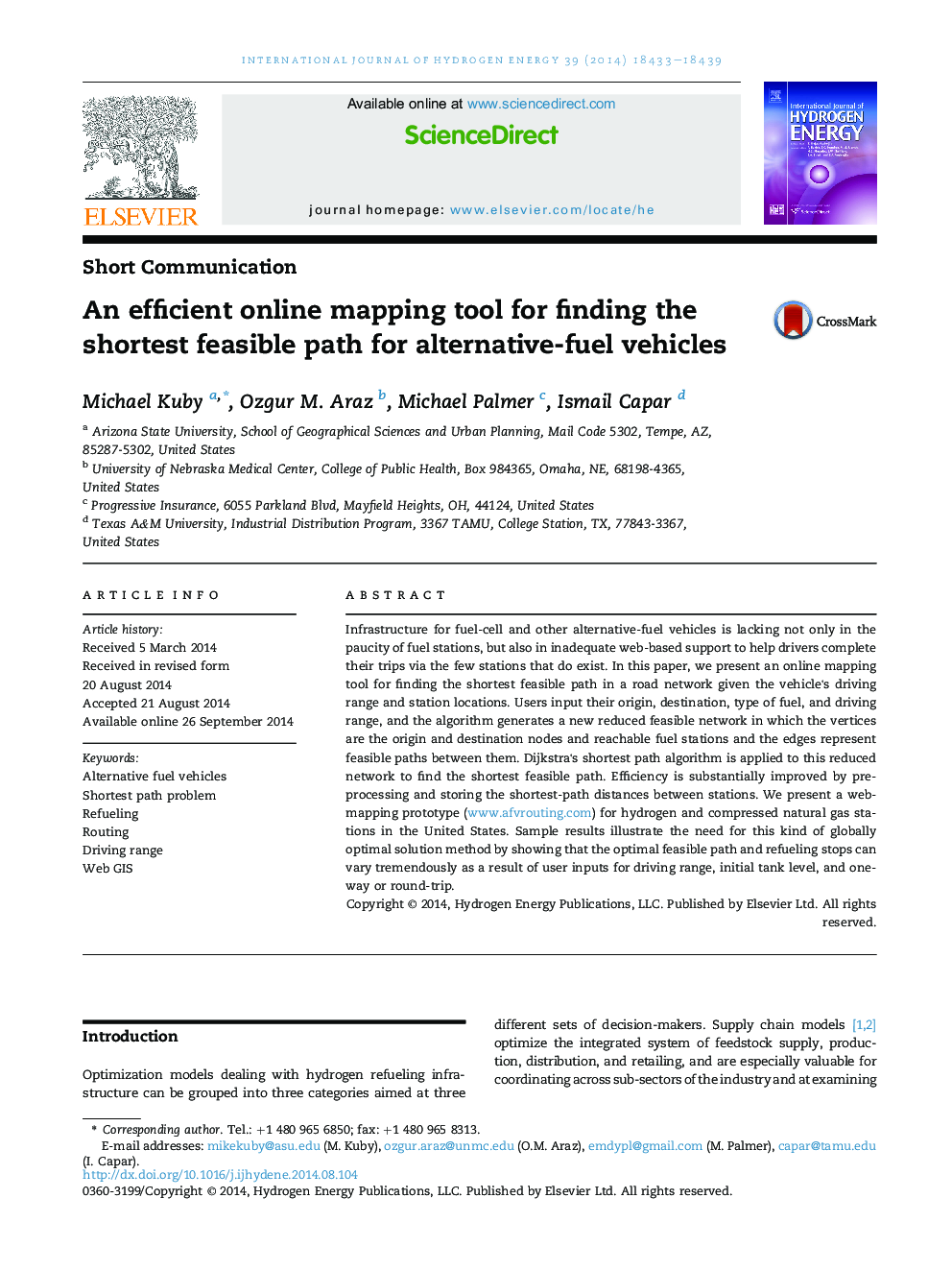| Article ID | Journal | Published Year | Pages | File Type |
|---|---|---|---|---|
| 1280854 | International Journal of Hydrogen Energy | 2014 | 7 Pages |
•Fewer stations and shorter driving range makes finding feasible routes a challenge.•We present an efficient web-mapping method to find the shortest feasible path.•Users input their origin, destination, fuel type, range, and start/end constraints.•A reduced network is created on which the shortest path is by definition feasible.•Online prototype solves in 2–35 s for multi-stop hydrogen and CNG examples.
Infrastructure for fuel-cell and other alternative-fuel vehicles is lacking not only in the paucity of fuel stations, but also in inadequate web-based support to help drivers complete their trips via the few stations that do exist. In this paper, we present an online mapping tool for finding the shortest feasible path in a road network given the vehicle's driving range and station locations. Users input their origin, destination, type of fuel, and driving range, and the algorithm generates a new reduced feasible network in which the vertices are the origin and destination nodes and reachable fuel stations and the edges represent feasible paths between them. Dijkstra's shortest path algorithm is applied to this reduced network to find the shortest feasible path. Efficiency is substantially improved by preprocessing and storing the shortest-path distances between stations. We present a web-mapping prototype (www.afvrouting.com) for hydrogen and compressed natural gas stations in the United States. Sample results illustrate the need for this kind of globally optimal solution method by showing that the optimal feasible path and refueling stops can vary tremendously as a result of user inputs for driving range, initial tank level, and one-way or round-trip.
